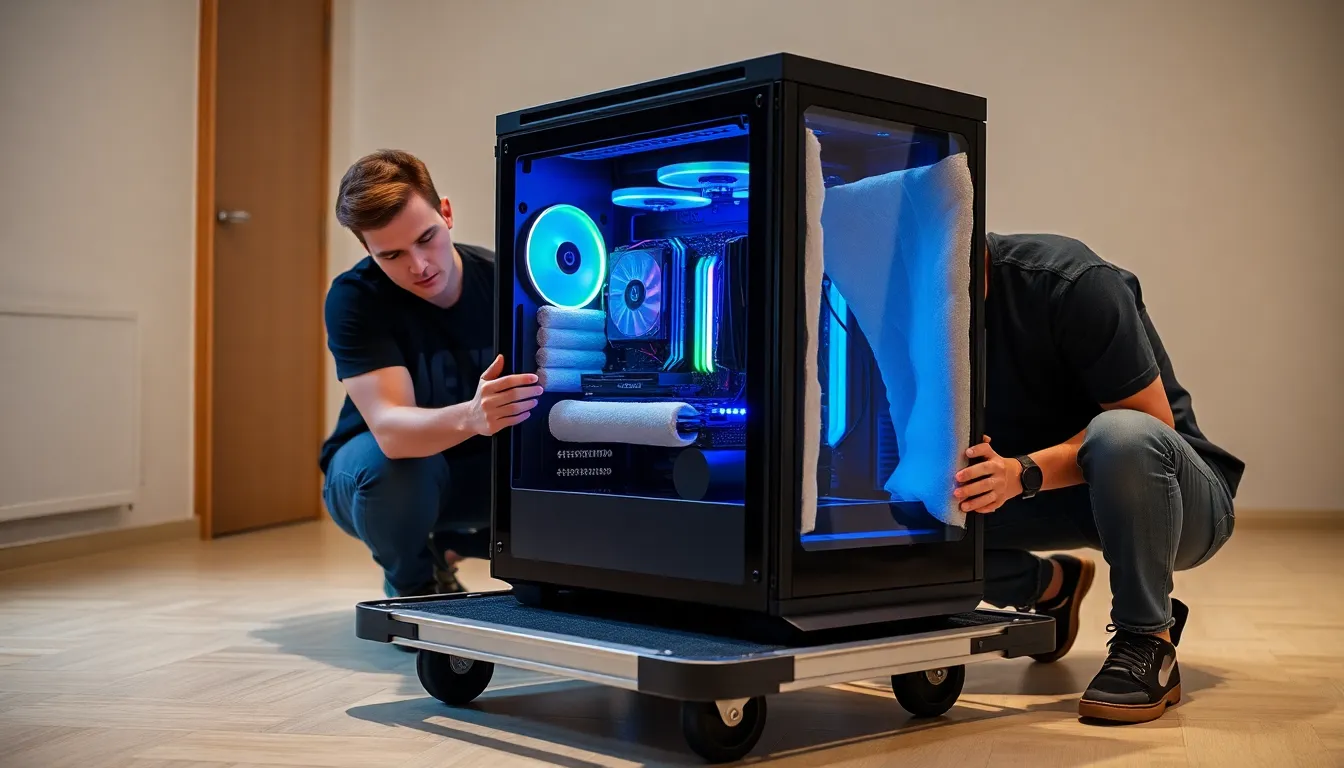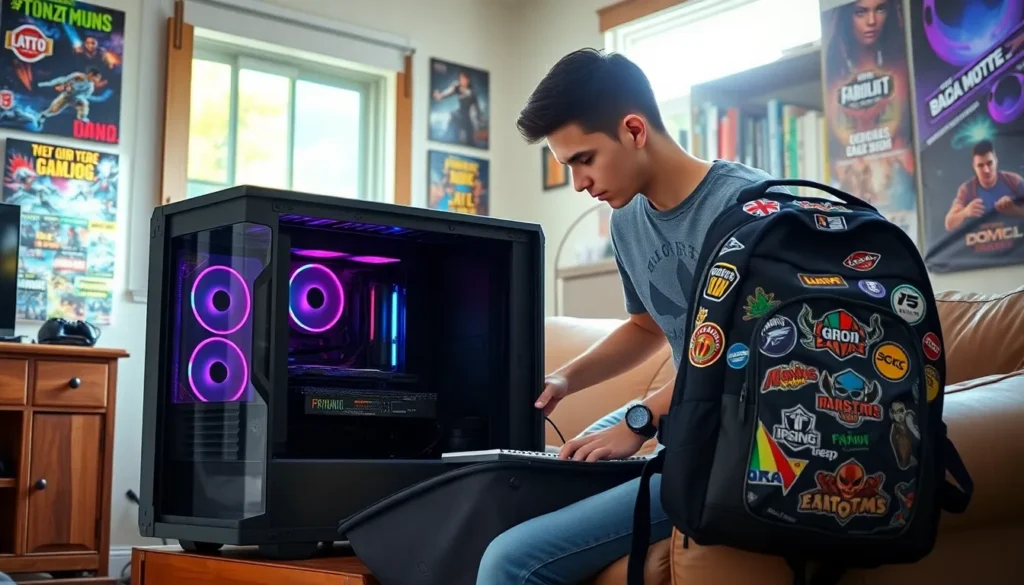Table of Contents
ToggleIn the fast-paced world of gaming, having a powerful gaming PC isn’t just a luxury: it’s a necessity. Whether heading to a gaming tournament, visiting friends for a multiplayer session, or just relocating your setup, understanding the nuances of transporting gaming PCs is essential. Proper transport not only protects valuable hardware but also preserves gaming performance. Let’s explore the ins and outs of safely moving your gaming rig, ensuring that every gaming session remains as thrilling as the last.
Understanding Gaming PC Transportation

Transporting a gaming PC might seem straightforward, but it involves several critical considerations. The delicate components inside ensure top performance, but they can also be easily damaged during transport. These components include the CPU, GPU, motherboard, and power supply, each of which is crucial for delivering high-quality gameplay.
A standard gaming PC often houses sensitive parts such as hard drives and RGB lighting systems that can be disrupted by jolts and vibrations. Also, the case itself may not provide adequate protection against the rigors of travel, especially if it’s a high-end custom build. Understanding how these components interact during movement can help gamers prepare for the best methods of transportation.
Why Transporting Your Gaming PC Matters
Transporting your gaming PC matters for several reasons, primarily revolving around convenience, performance, and protection. Gamers often attend LAN parties, competitions, or simply wish to enjoy gaming sessions at different locations. Without proper transport, gamers risk damaging expensive equipment or losing their valuable data.
Also, a well-maintained gaming PC’s performance hinges on its components being installed correctly and not subjected to stress during transit. A thorough understanding of how to transport it safely translates to fewer headaches and prolonged lifespan for all hardware involved. Transporting your gaming setup encompasses more than just carrying it: it’s about safeguarding an investment and ensuring endless gaming joy.
Best Practices for Safe Transport
Safe transport of gaming PCs requires attention to detail and a robust plan. Here are several best practices to follow:
- Backing Up Your Data: Before moving anything, always back up essential files. Use cloud storage or an external hard drive to guarantee that no vital data is lost.
- Cleaning Your PC: Remove dust and debris. Cleaning your components can prevent overheating issues when you power them up after transportation.
- Removing Loose Parts: Take out any removable components such as graphics cards and hard drives and transport them separately. This not only protects them but also reduces weight if you need to carry your setup manually.
- Securing Cables: Bundle cables neatly and ensure they are not tangled. This minimizes the risk of damage or accidental unplugging when on the move.
- Using Proper Insulation: Employ bubble wrap, foam, or blankets within a sturdy box or container to cushion your PC. This insulation minimizes impact and prevents movement during transport.
- Transport Position: Keep your PC upright to prevent any internal damage. Placing it flat may cause the hard drive to unbalance and could lead to irreparable damage.
Recommended Transport Solutions
When it comes to transporting gaming PCs effectively, several solutions can streamline the process:
- PC Transport Cases: Specialty transport cases designed for PCs can be extremely beneficial. These cases offer padding, structural support, and convenient handles.
- Travel Bags with Compartments: Compact travel bags with customizable compartments allow for adding extra cushioning around critical hardware like graphics cards and power supplies. Look for cases made of durable materials for maximum protection.
- Custom Foam Inserts: Some companies provide foam inserts designed to fit your gaming PC that can safeguard against shocks and bumps.
- Transport Services: For longer distances, professional transport services that handle electronics with care can be an excellent investment, ensuring peace of mind throughout the journey.
Common Mistakes and How to Avoid Them
Even though the best intentions, gamers often make mistakes when transporting their setups. Here are some common pitfalls:
- Failing to Back up Data: As mentioned earlier, forgetting to back up vital files can result in catastrophic data loss.
- Not Detaching Components: Leaving components plugged in can lead to damage: detaching them ensures they aren’t knocked during transit.
- Using Inadequate Protection: Relying solely on a standard box can expose sensitive parts to damage. Investing in padded transport solutions is critical.
- Ignoring Weather Conditions: Failing to protect equipment from rain or extreme temperatures can lead to disaster. Consider weather forecasts and pack accordingly.
- Improvising on Placement: Not placing the PC in a secure spot within a vehicle can lead to devastating drops or shifts. Secure the PC to avoid unwanted movement.
Conclusion
Transporting a gaming PC is more than a mere logistical challenge: it’s about protecting an investment and ensuring an optimal gaming experience. By understanding best practices, utilizing proper transport solutions, and avoiding common mistakes, gamers can safeguard their systems while enjoying the flexibility of once again gaming anywhere they choose. Proper planning will set the stage for an uninterrupted gaming adventure, no matter where the journey takes them.

